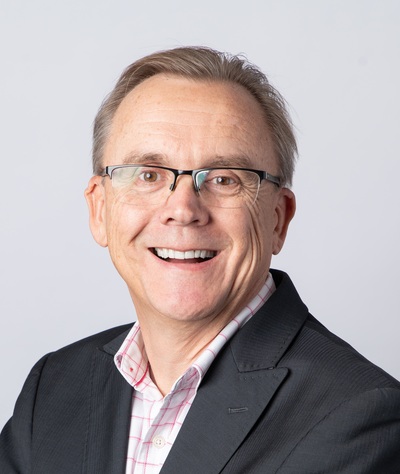This post was originally published on Sustainability Matters

With world leaders, climate and environmental scientists and business leaders having gathered in Baku for COP29 — the 29th Conference of the Parties to the United Nations Framework Convention on Climate Change (UNFCCC) — we’ve been advocating that this transformation poses significant challenges while simultaneously providing opportunities for growth, resilience and innovation.
The role of coal and the need for change
Coal remains the largest contributor to climate change, generating 35% of global electricity as of 2023. The International Energy Agency’s (IEA) net-zero scenario calls for OECD countries to reduce coal’s share in power generation to 14% by 2030, with a complete global phase-out of unabated coal by 2040.
This underscores the fact that achieving global climate goals hinges on a viable energy transition strategy, particularly in Asia, where demand continues to surge.
The need for decarbonisation is stark: Asia’s carbon emissions now account for over half of the global total. The young age of Asia’s coal fleet — about 13 years on average — complicates the shift to renewables, with significant investments still tied up in coal plants. According to the World Economic Forum, policies that streamline and incentivise plant closures or conversions can accelerate the pace of transition.
Economic and environmental challenge
Transitioning to renewables in Asia requires not only technological shifts but also robust financial mechanisms.
We need financing models that incorporate public and private capital, with mechanisms like loans and grants making clean energy more accessible and competitive.
Countries like Vietnam face hurdles such as rigid power purchase agreements that protect coal plants from competition. Overcoming these barriers demands innovative financing, potentially reducing the cost of capital to make renewable projects more viable and less risky.
The move from coal to renewables also requires securing grid stability and resilience. The diversity of resources across Asia — from hydropower in Southeast Asia to solar in China — necessitates tailored strategies for integrating these resources into a cohesive and stable energy grid. GHD is actively involved in helping clients to navigate these complexities by advising on technical planning, decommissioning and the use of renewables like solar and wind.
Action steps to help Asia transform from coal to clean:
- Develop robust financing models: Facilitate access to capital with a mix of loans, grants and public–private partnerships to make renewable energy more competitive and scalable.
- Strengthen policy frameworks: Governments should adopt supportive policies to encourage investment, ease regulatory restrictions and provide incentives for renewable energy projects.
- Invest in grid resilience and smart technology: Modernising grid infrastructure, including smart grids, is essential for integrating renewables and managing intermittent supply efficiently.
- Encourage regional knowledge-sharing and collaboration: Cross-border partnerships can accelerate technology transfer, innovation and the development of best practices for transitioning from coal.
-
Support local workforces and communities: Implement training programs, workforce transition initiatives and local engagement strategies to ensure a fair and equitable transition for coal-dependent communities.
Based on this, there are three critical pillars for a successful transition: stable technical solutions, sustainable stakeholder engagement and a strong business case. Every project requires bespoke planning that integrates stakeholder interests, addresses environmental impacts and leverages technical expertise to ensure grid reliability.
A well-defined transition strategy that supports all stakeholders and secures financial backing is essential for a viable energy future.
Creating such a strategy involves evaluating the potential of each project and exploring repurposing opportunities, from battery storage to hydrogen production.
Looking forward: policy, financing and social impact
A successful transition will rely on supportive policies that facilitate investment and foster technological advancements. We need to understand the importance of a ‘just transition’ that balances environmental goals with economic equity, especially in coal-reliant communities.
Communities cannot be sidelined; local stakeholders need to benefit from new economic opportunities in renewables. At COP29 in Baku, GHD has been advocating for a holistic approach, including policy alignment, financial innovation and active community engagement.
The shift from coal to clean energy isn’t merely a goal — it’s an urgent necessity. Through collaboration, innovation and commitment to sustainable development, we can achieve a cleaner, greener future for Asia and beyond.
*Richard Fechner is GHD’s Enterprise Business Advisory Leader, leading the global business in providing strategy, commercial, economic, business case, logistics, policy, regulatory, asset management and transaction services. With over 30 years of experience, Richard has held senior roles in both the private and public sectors, contributing significantly to infrastructure development, investment and delivery across various sectors including ports, agriculture, energy, government and defence. He has advised on approximately AU$150 billion in infrastructure transactions and is a highly skilled infrastructure and business professional with expertise in strategic planning, business management and project engineering.
 **Dr Tej Gidda is a distinguished expert in clean energy transitions and currently serves as the Global Leader for Future Energy at GHD. With over 20 years of industry experience, Dr Gidda holds a PhD in Environmental Engineering and is a registered Professional Engineer in Ontario. His work focuses on integrating clean energy technologies into existing systems and developing innovative strategies to overcome challenges related to reliability and affordability. Dr Gidda’s expertise spans hydrogen, renewable natural gas, traditional renewables, energy from waste, energy security and planning. He is also an adjunct professor at the University of Waterloo.
**Dr Tej Gidda is a distinguished expert in clean energy transitions and currently serves as the Global Leader for Future Energy at GHD. With over 20 years of industry experience, Dr Gidda holds a PhD in Environmental Engineering and is a registered Professional Engineer in Ontario. His work focuses on integrating clean energy technologies into existing systems and developing innovative strategies to overcome challenges related to reliability and affordability. Dr Gidda’s expertise spans hydrogen, renewable natural gas, traditional renewables, energy from waste, energy security and planning. He is also an adjunct professor at the University of Waterloo.
Top image caption: Pagudpud Wind Farm, Ilocos Norte, Philippines. Image courtesy of GHD.





0 Comments